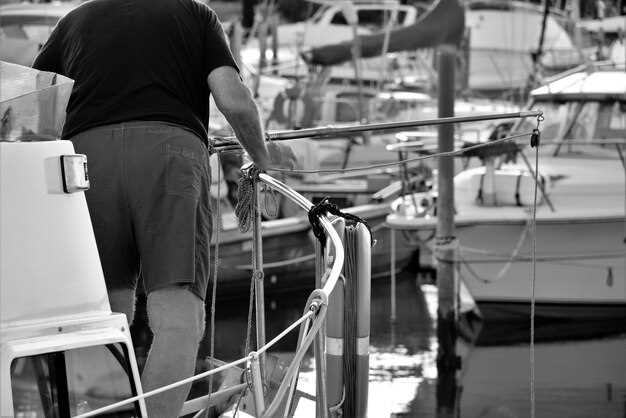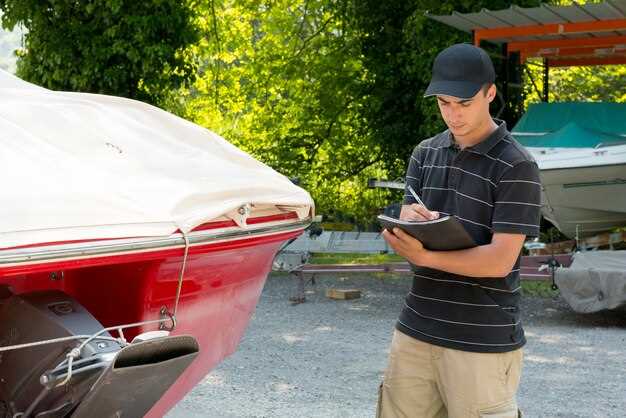Budgeting for a complete boat restoration project

Restoring a boat can be a thrilling venture, breathing new life into a marine vessel that holds the promise of adventure and exploration. However, successful restoration goes beyond mere passion; it requires meticulous planning and a well-defined budget. Without careful financial management, your dream project can quickly turn into a nightmare, leading to unforeseen expenses and delays.
Understanding the costs involved in a boat restoration is crucial. From structural repairs to cosmetic upgrades, each phase of the project demands a significant investment. This guide aims to equip you with the necessary tools and knowledge to create a comprehensive budget, ensuring that your restoration journey remains on track and within financial reach.
By breaking down the expenses into manageable categories such as materials, labor, and unexpected costs, you can gain a clearer perspective on how to allocate your resources effectively. With proper budgeting, you are not just managing a project; you are investing in a maritime experience that will bring joy for years to come.
Estimating Costs for Materials and Supplies in Boat Restoration

When planning a boat restoration project, accurately estimating costs for materials and supplies is crucial to avoid budget overruns. The first step is to create a comprehensive list of all necessary items, including wood, fiberglass, paint, varnish, and hardware. Each category can vary significantly in price based on quality, brand, and type, so thorough research is essential.
Consider the specific type of boat you are restoring, as different marine vessels require different materials. For instance, a wooden boat may need specific types of wood that resist moisture, while a fiberglass boat will require resin and cloth suitable for repairs. Understanding these requirements helps in selecting the right supplies and prevents overspending on unnecessary items.
Next, evaluate the quantity of each material needed. Take measurements of the boat and calculate the total area or volume that will require materials, such as paint or wood. This can be done by breaking down the project into sections and estimating the amount required for each, facilitating more accurate budgeting.
Don’t forget to factor in additional supplies such as adhesives, sealants, and tools that may be needed for the restoration. While it may be tempting to skimp on tools or buy used materials to save money, investing in quality items can greatly impact the final result and longevity of the restoration.
Once all costs are estimated, add a buffer of approximately 10-20% to your total budget. This contingency ensures that unforeseen expenses, which are common in marine projects, do not derail your restoration efforts. By providing a detailed financial plan and accounting for potential surprises, you can approach your boat restoration with confidence and clarity.
Creating a Timeline to Allocate Budget for Each Phase of the Project
When embarking on a boat restoration project, meticulous planning is essential to ensure that financial resources are allocated effectively throughout each phase. A well-structured timeline helps in visualizing the project’s progression while enabling efficient budget management.
Begin by breaking down the restoration process into distinct phases, such as assessment, materials acquisition, labor costs, and finishing touches. Each phase should have clearly defined objectives, allowing for a better understanding of the relevant expenses involved. By outlining each step, you can allocate funds correspondingly, ensuring that the marine restoration does not exceed its budget.
Next, assign estimated timeframes to each phase. Consider factors such as availability of materials, labor schedules, and possible weather impacts that could affect the timeline. By anticipating these elements, you can create a realistic schedule that keeps the project on track while allowing for potential delays in budget allocation.
In the budgeting process, incorporate contingency funds to address unforeseen issues that may arise during the restoration. Marine projects often come with unexpected challenges, such as hidden damage or supply chain disruptions. Allocating a percentage of the total budget for contingencies ensures that you are prepared without derailing the project timeline.
Regularly review and adjust your timeline as the project progresses. Keeping track of expenditures and comparing them to your original budget will help you identify areas where savings can be made or where additional resources are required. This proactive approach keeps the restoration project within financial limits while achieving the desired results.
Identifying Hidden Expenses in Marine Restoration Projects

When embarking on a marine restoration project, careful planning is essential to create an effective budget. However, many boat owners often overlook hidden expenses that can significantly impact the overall costs. Identifying these concealed financial elements can help ensure a more accurate and comprehensive budget.
First, consider the costs associated with labor. While some owners may plan to undertake the work themselves, unexpected physical limitations, skill gaps, or time constraints can necessitate hiring professionals. This can incur additional expenses such as hourly rates, overtime, or specialized skills not initially accounted for.
Second, materials can often have hidden costs. While budgeting for the primary supplies, like paint and wood, ensure to include expenses for adhesives, sealants, varnishes, and finishes. Additionally, quality materials generally result in long-term sustainability but may come at a higher initial price.
Third, evaluate potential fees for permits and inspections. Depending on the extent of the restoration, local or state regulations might require official permission or periodic assessments during the project. These costs can add up and should be integrated into your budget to avoid surprises.
Lastly, think about the possibility of unforeseen repairs. Older boats often harbor hidden issues that only become apparent during restoration, such as structural damage, corrosion, or engine problems. It’s wise to allocate an emergency fund within your budget to address these unexpected repairs.
By thoroughly identifying these hidden expenses, you can refine your marine restoration project budget, ensuring that you are better prepared for both planned and unexpected financial commitments. This proactive approach allows for a smoother restoration process and enhances your overall satisfaction with the project.




